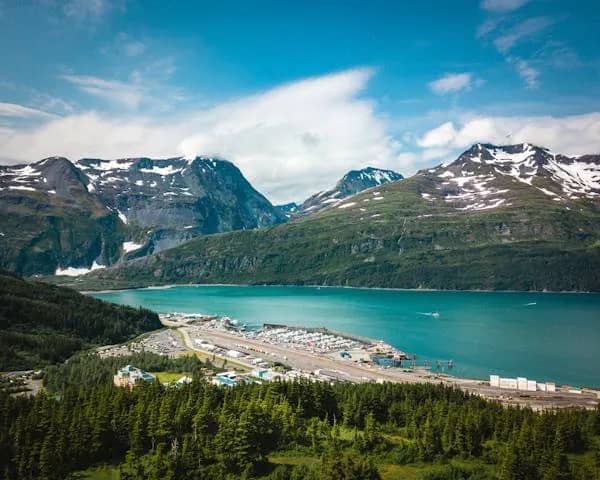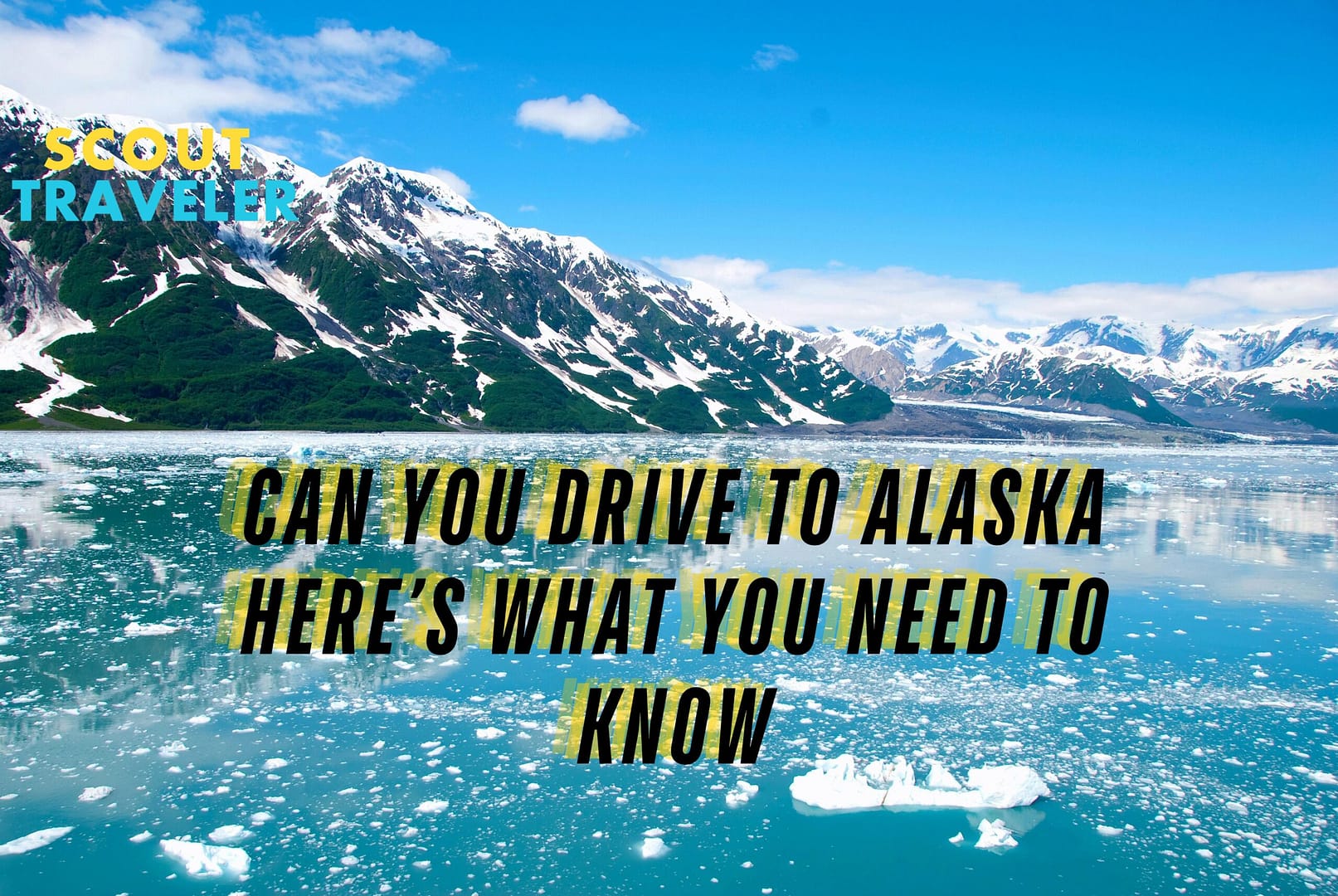Can you drive to Alaska? the answer is a resounding yes. Driving to Alaska is an adventure that many road trip enthusiasts dream of, offering breathtaking landscapes and unique experiences.
This article will guide you through the essentials, from understanding the Alaska Highway history to calculating the costs involved. By the end, you’ll be well-prepared for this epic journey.
Let’s dive into the details of this remarkable road trip.
Alaska Highway History
The Alaska Highway, also known as the Alcan Highway, is a critical route connecting the contiguous United States to Alaska. Constructed during World War II, it was initially built to supply military bases and facilitate transport in case of a Japanese invasion.
The project began in 1942 and was completed in just over eight months, spanning approximately 1,700 miles from Dawson Creek in British Columbia, Canada, to Delta Junction in Alaska.
The highway was a remarkable engineering feat, overcoming harsh weather conditions and challenging terrain. Today, it stands as a testament to human perseverance and is a popular route for those driving to Alaska.
Driving to Alaska on the Alaska Highway
Embarking on a road trip to Alaska via the Alaska Highway is an exhilarating experience. The journey starts in Dawson Creek, where travelers can take a photo with the famous Mile 0 Post.
From there, the highway weaves through the rugged wilderness of British Columbia and the Yukon Territory, offering stunning views of mountains, forests, and wildlife. Key stops along the way include Fort Nelson, Muncho Lake, Watson Lake, and Whitehorse.
Is the Alaska Highway dangerous?
The Alaska Highway is generally safe, but it can be challenging due to rough sections, wildlife crossings, and unpredictable weather. Proper preparation and cautious driving are essential.
It’s essential to plan your trip carefully, ensuring your vehicle is in good condition, and you have all necessary supplies, including spare tires, food, and water. The Alaska Highway is mostly paved, but some sections can be rough, so preparedness is crucial.
Do You Need a Passport to Drive to Alaska?
When driving to Alaska from the contiguous United States, you will pass through Canada, which requires travelers to have a valid passport. Ensure your passport is up-to-date before starting your journey. Additionally, check for any visa requirements or travel advisories related to Canada.
It’s also wise to carry proof of vehicle insurance and registration, as well as a copy of your itinerary. If traveling with pets, make sure you have their health certificates and vaccination records. Proper documentation will help you avoid any complications at border crossings and ensure a smooth trip.
Can you drive from Alaska to Russia?
No, you cannot drive from Alaska to Russia. Although the distance between Alaska and Russia is relatively short across the Bering Strait, there is no road or bridge connecting the two.
The Bering Strait is approximately 55 miles wide at its narrowest point, and it consists of challenging and icy waters, making it impossible to drive between the two continents. The only practical ways to travel between Alaska and Russia are by air or sea.
Best Time to Visit Alaska

The best time to visit Alaska is during the summer months, from mid-June to mid-September. This period offers the most pleasant weather, with long daylight hours, making it ideal for outdoor activities like hiking, wildlife viewing, and exploring national parks. Temperatures are generally mild, ranging from 60°F to 80°F (15°C to 27°C), and the days are long, providing plenty of time to enjoy the stunning landscapes.
Worst Time to Visit Alaska

The worst time to visit Alaska is typically during the winter months, from November to March. During this period, the weather can be extremely harsh, with temperatures often dropping below freezing. Additionally, many tourist attractions and facilities are closed, and daylight hours are very limited, especially in December and January, when some areas experience almost no daylight. Heavy snowfall and icy conditions can also make travel difficult and dangerous.
How Long Does It Take to Road Trip to Alaska?
The time it takes to drive to Alaska depends on your starting point and how often you stop. On average, the journey from Seattle to Anchorage covers around 2,260 miles and takes about 45 to 50 hours of driving time.
Most travelers spread this out over several days, making stops to rest, refuel, and explore the scenic surroundings. Planning for a week-long trip is advisable, allowing for leisurely travel and unexpected delays.
The road conditions, weather, and your vehicle’s performance will also influence the travel time. It’s essential to be flexible and prepared for varying driving conditions.
Calculate Your Cost to Drive to Alaska
Driving to Alaska involves several cost considerations. Here’s a table to help you estimate your expenses:
| Expense | Estimated Cost |
| Fuel | $600 – $1,000 |
| Accommodation | $50 – $150 per night |
| Food and Supplies | $30 – $50 per day |
| Vehicle Maintenance | $100 – $300 |
| Border Crossing Fees | Varies |
| Activities and Excursions | $100 – $300 |
Key Cost Factors
- Fuel: Calculate the distance based on your vehicle’s fuel efficiency and current gas prices.
- Accommodation: Costs vary depending on whether you camp or stay in hotels/motels.
- Food and Supplies: Budget for daily meals and any supplies you might need on the road.
- Vehicle Maintenance: Ensure your vehicle is in top condition before the trip to avoid unexpected repairs.
- Activities and Excursions: Factor in costs for sightseeing and any planned activities.
Planning ahead and budgeting for these expenses will help you manage your finances effectively during your road trip.
Final Words on Can you drive to Alaska
Driving to Alaska is not just a road trip; it’s a journey through some of the most stunning and remote landscapes in North America. From the historical significance of the Alaska Highway to the practicalities of travel documents and costs, this guide covers all you need to know.
As you prepare for this adventure, remember to embrace the unexpected and enjoy every moment of the trip. Just as herbivorous dinosaurs with spikes once roamed vast terrains, you’ll traverse the rugged beauty of Alaska, creating memories that will last a lifetime. Safe travels!
FAQs on Can you drive to Alaska
What is the speed limit on Alaska Highway?
The speed limit on the Alaska Highway varies but is typically between 55 to 65 mph (90 to 100 km/h). Always follow posted signs and adjust your speed for road conditions.
How much time it take to drive from Seattle to Anchorage?
Driving from Seattle to Anchorage takes approximately 45 to 50 hours of driving time, covering about 2,260 miles. Most travelers take about a week to complete the trip, allowing time for rest and sightseeing.
Can you drive to Alaska in June?
Yes, June is a great time to drive to Alaska. The weather is generally favorable, and the long daylight hours allow for extended driving and sightseeing.
Is it safe to drive to Alaska?
Yes, driving to Alaska is safe if you are well-prepared. Ensure your vehicle is in good condition, carry necessary supplies, and stay informed about road and weather conditions.
Can you drive to Alaska without passes through Canada?
No, you cannot drive to Alaska from the contiguous United States without passing through Canada. You valid passport is required for entry into Canada.
Can you drive to Alaska from New York?
Yes, you can drive to Alaska from New York. The trip is long, covering around 4,500 miles, and will take several days to complete. Proper planning and preparation are essential for such an extensive journey.
